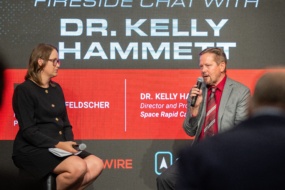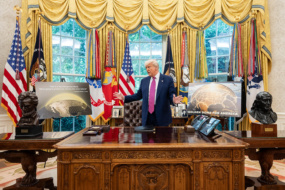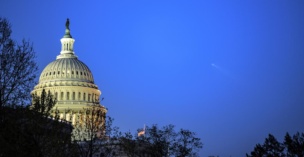DoD needs to see what’s going on around the Moon. A former NASA chief predicts the agency is about to boost budgets to make sure it can.
Jim Bridenstine, a former Oklahoma Republican lawmaker who led NASA in the first Trump administration, said the US needs to add sensors in both cislunar space and on the surface of the Moon to keep tabs on the actions of adversaries in orbit.
“In the coming years, you’re going to see more and more spending from the DoD on those capabilities. It’s going to be necessary,” Bridenstine said Wednesday at Payload’s Lunar and Mars Economy Summit. “The DoD will be late, because they always are…but at the end of the day, it’s got to be done.”
Other highlights from Bridenstine’s remarks:
The optics: Could the military’s plans to build structures on the lunar surface raise concerns among the public—and international actors—about the militarization of space? Bridenstine said it ultimately doesn’t matter.
“The reality is we’ve got to do what we’ve got to do to secure this country,” he said. “We can’t just pretend like we don’t need to know what’s happening out there, from a national security perspective.”
He also said he heard that some officials within DoD believe that the Pentagon can’t take on lunar surface operations under the Outer Space Treaty, which expressly prohibits using “national appropriation by claim of sovereignty” in outer space and on the Moon.
“That is a wrong interpretation of the Outer Space Treaty. And if somebody is interpreting that way, they need to be corrected,” he said. “We’re not claiming the Moon. We’re just knowing what’s happening in space, and I think that’s perfectly legit. Other countries are going to do it, so we should too.”
In defense of CLPS: On the first day of the summit, some industry officials criticized NASA’s program to encourage industry to develop cheaper, commercial rides to the Moon, while others lauded its success in opening up both commercial and international markets.
Bridenstine, who oversaw the creation of CLPS while leading NASA, shared how the program began.
- President Donald Trump signed Space Policy Directive 1, which directed the US to go back to the Moon, in December 2017—before Bridenstine joined NASA.
- However, before Bridenstine took office in April 2018, the administration canceled the agency’s Resource Prospector mission—NASA’s only Moon mission that existed at that time, according to Bridenstine.
- So, looking for a way to remain aligned with Space Policy Directive 1 under NASA’s limited budget, Bridenstine said he came up with CLPS.
- The program was originally envisioned as a follow-on to the Google Lunar XPRIZE, but instead backed by NASA. But when lawyers told Bridenstine NASA couldn’t offer a prize due to federal contracting rules, he pivoted to the CLPS program in its current form—paying companies to bring small payloads to the Moon.
“I will fully admit right now: It needs to be better funded, and we need to get to bigger landers,” Bridenstine said. “The program did what it intended to do, from a NASA perspective. It’s been successful.”
“If you jumped into the CLPS program expecting NASA to be your only customer, and you jumped into the CLPS program expecting NASA to fund the whole thing, you’re probably not happy,” he added.
Space Race 2.0: “There is a great misalignment between what politicians are saying, and what contractors are delivering on,” Bridenstine said.
If the name of the game is speed, the government should be pursuing a simple, streamlined mission with as much commercial off-the-shelf tech as possible, he said. However, the current architecture to return to the Moon includes many, many moving pieces—including a rocket-turned-human landing system, multiple launches, and in-space refueling.
Much of this tech is proving out what Bridenstine called “transformational capabilities” for the first time.
“That whole architecture is nuts. It does not make sense. If you’re trying to beat China to the Moon, this is not how you do it,” he said.




